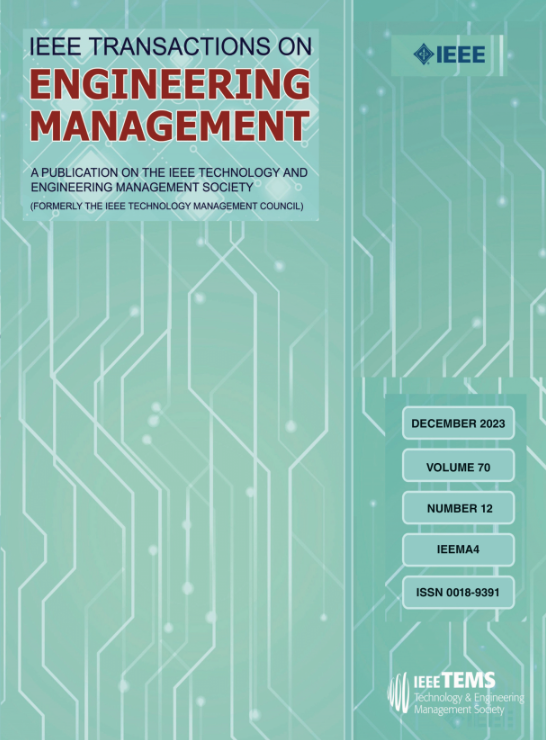Exploring Open Innovation Dynamics: Service and Delivery Interplay in Circular Economy
IF 4.6
3区 管理学
Q1 BUSINESS
引用次数: 0
Abstract
The current business environment is witnessing significant changes due to changing customer preferences and an increasing desire for exclusive and experiential benchmarks. In light of these changes, it is crucial to analyze the convergence of open innovation (OI) in service and service delivery (SD) within the context of circular economy (CE) goals. The objective of this article is to examine the complex relationship between service innovation (SI) and service delivery innovation (SDI) while evaluating the preparedness of organizations to adopt CE practices. This article examines how innovative SD methods, viewed through the lens of service-dominant (S-D) logic, can develop dynamic capabilities to effectively address changing customer requirements. This, in turn, leads to enhanced satisfaction and customer loyalty. Based on survey data from a sample of 435 responses, this article examines the moderating role of SDI and its interplay with SI, and the integrated effect of both, using regression, structural equation modeling, and the Hayes Process model. The findings emphasize the significant impact of SDI, demonstrating its ability to both moderate and enhance the relationship between SI and the generation of value for consumers. It examines the need to place SDI separate from SI. This undertaking strengthens the collaboration of S-D logic with dynamic capabilities approach and enables the incorporation of OI paradigms with the requirements of CE practices. The main goal of this article is to direct the service sector toward a future that places a strong emphasis on value creation and sustainability.探索开放式创新动力:循环经济中服务和交付的相互作用
由于客户偏好的变化以及对独家和体验基准的日益增长的渴望,当前的商业环境正在发生重大变化。鉴于这些变化,在循环经济(CE)目标的背景下,分析开放式创新(OI)在服务和服务交付(SD)方面的融合是至关重要的。本文的目的是研究服务创新(SI)和服务交付创新(SDI)之间的复杂关系,同时评估组织采用CE实践的准备情况。本文从服务主导(S-D)逻辑的角度考察了创新的SD方法如何开发动态能力,从而有效地满足不断变化的客户需求。这反过来又会提高满意度和客户忠诚度。本文基于435份问卷调查数据,运用回归模型、结构方程模型和Hayes过程模型,探讨了SDI的调节作用及其与SI的相互作用,以及两者的综合效应。研究结果强调了SDI的重要影响,证明了它能够调节和增强SI与消费者价值产生之间的关系。它考察了将SDI与SI分开放置的必要性。这项工作加强了S-D逻辑与动态能力方法的协作,并使OI范例与CE实践的需求相结合成为可能。本文的主要目标是引导服务业走向一个强调价值创造和可持续性的未来。
本文章由计算机程序翻译,如有差异,请以英文原文为准。
求助全文
约1分钟内获得全文
求助全文
来源期刊

IEEE Transactions on Engineering Management
管理科学-工程:工业
CiteScore
10.30
自引率
19.00%
发文量
604
审稿时长
5.3 months
期刊介绍:
Management of technical functions such as research, development, and engineering in industry, government, university, and other settings. Emphasis is on studies carried on within an organization to help in decision making or policy formation for RD&E.
 求助内容:
求助内容: 应助结果提醒方式:
应助结果提醒方式:


